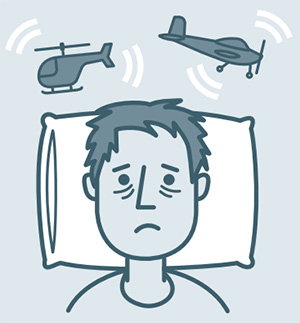 Aircraft naturally create noise, for a variety of reasons. Aircraft noise can be a nuisance and, in some circumstances, can lead to human health and safety issues. The noise aircraft create is subject to several layers of regulation so that aircraft noise is minimised, but at the same time, the benefits coming with air travel are also not overly restricted.
Aircraft naturally create noise, for a variety of reasons. Aircraft noise can be a nuisance and, in some circumstances, can lead to human health and safety issues. The noise aircraft create is subject to several layers of regulation so that aircraft noise is minimised, but at the same time, the benefits coming with air travel are also not overly restricted.
The CAA is the part of government responsible for keeping civil aviation, (non-military) safe. The work of the CAA primarily covers the safety and security of New Zealand flying. It doesn’t cover trespass, privacy concerns, or local bylaws.
The CAA has a limited scope to regulate some aspects of aircraft noise, primarily when an aircraft is in flight. Civil Aviation Rules require that aircraft airworthiness noise emissions standards are met (Rule Part 21). And, Rule Part 93 sets out special noise abatement procedures for certain aerodromes in New Zealand. When aircraft operations comply with civil aviation rules about noise, these cannot be reviewed by a court (section 97 of the Civil Aviation Act 2023).
Aircraft noise at airports or aerodromes (including heliports) forms part of the operating conditions for that activity as set by the local territorial authority. Under the Resource Management Act 2015 (RMA), aircraft noise must be reasonable, and comply with section 16 of the RMA. In assessing if noise is reasonable, territorial authorities may refer to the Civil Aviation Rules and/or relevant standards, including:
NZS6805:1992 - Airport noise management and land use planning(external link), or
NZS6807:1994 - Noise management and land use for helicopter landing areas(external link).
However, aircraft noise from take off and landing is not 'excessive noise' in section 326 of the RMA and cannot be managed by the excessive noise provisions.
If an aircraft is flown commercially, the flight will generally be subject to the Health and Safety at Work Act 2015(external link). The person or business responsible for that flight must take all reasonable steps to identify and manage risks resulting from it, and ensure it does not cause harm to anyone’s health or safety.
If you’re concerned about aircraft noise, and you know the company flying the aircraft, we recommend that, in the first instance, you contact that company, and politely and respectfully explain how the noise is affecting you. You can ask if they’ve identified aircraft noise as a hazard and if they can do anything about it.
Most operators, especially those in business, want to maintain a positive relationship with the community, and will do what they can to minimise their impact, given the chance. Keep in mind that they also want to go about their lawful business, and for various reasons, they cannot completely eliminate the noise.
If you think aircraft noise is affecting your health, see Raise a health or safety concern(external link)
In New Zealand, civil aircraft are required to fly above minimum heights which alleviates, to some degree, the impact of noise.
Minimum height requirements apply to most aircraft flying in New Zealand, but there are some exceptions, including if the aircraft is taking off, landing, or if the purpose of the flight requires a lower height, for instance, surveying.
If the aircraft is taking off or landing, it can fly over property – such as surrounding residential neighbourhoods. It can do this, only if:
Most of the time, aircraft must be flown at least 500 feet above ground level, or 1000 feet above ‘congested areas’. These include areas like cities, towns, or settlements which are substantially in residential, industrial, commercial, or recreational use.
Pilots are also encouraged to ‘fly neighbourly’, which means that, as long as it’s safe to do and where possible, they should fly so as to minimise their impact – especially of noise. This includes flying higher, where possible. But there are a variety of reasons why it might not be possible, such as air traffic control restrictions and weather conditions such as cloud or turbulence.
Auckland(external link), Paraparaumu(external link), and Wellington(external link) also have a curfew to mitigate the effects of aircraft noise.
If you think the aircraft noise that’s worrying you is due to low flying, or in breach of those curfews, report an aviation related concern(external link) and provide as much detail as you can.
While helicopters can hover, and climb straight up, and descend straight down, this is generally not a safe, quick or quiet way of approaching or departing. They typically climb or descend similarly to, or a little steeper than, a regular aeroplane.
Because helicopters often take off and land in rural environments, it’s usually also necessary for the pilot to carry out a reconnaissance (usually orbiting) flight to identify all hazards (obstacles, wires, turbulence and so on) and plan the safest route to approach and depart an area.
The civil aviation rules require that helicopters are operated in such a way that, in the event of an engine failure, the aircraft doesn’t hurt people on the ground, or damage property. That may mean different routes are flown on different days, depending on conditions.
Before an aircraft is licensed, or ‘certificated’ to fly in New Zealand, it’s assessed, among other things, on the volume of noise it produces, compared with the accepted standards for that type of aircraft. The overseas certification of an aircraft is reviewed if the aircraft is to be flown in New Zealand.